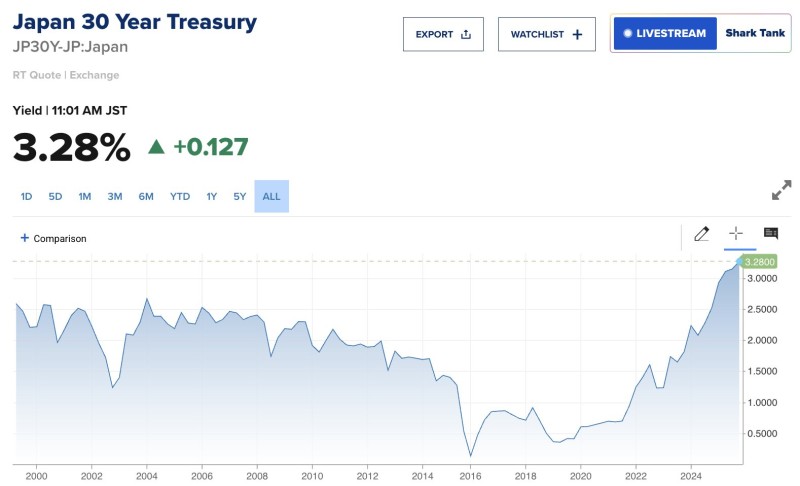For decades, Japan's government bond market represented rock-bottom yields and persistent deflation. That era has ended. The 30-year bond yield just hit 3.29%, marking a historic peak that signals a fundamental shift in how markets price Japanese debt and the nation's economic future.
Chart Analysis
The chart reveals a structural reversal. After years hovering near zero, Japan's 30-year yields began climbing in 2021 as global monetary tightening took hold. From nearly flat levels in 2016, rates pushed past 1% in 2021, then exceeded 2.5% in 2024 before reaching today's unprecedented 3.28%. As trader Barchart notes, this upward momentum has wiped out two decades of ultra-low yield stability.

Japanese bonds have entered uncharted territory with no historical resistance to cap further gains.
What's Driving the Surge
Inflation has returned, with consumer prices consistently running above the Bank of Japan's 2% target, forcing yields higher. The central bank has gradually loosened its yield curve control framework, allowing long-term rates to move more freely than at any point in recent memory. Global spillover from rising U.S. Treasury and European bond yields has set the tone for Japanese debt. Meanwhile, Japan's massive debt burden makes markets unusually sensitive to shifts in long-term financing costs, amplifying upward pressure on yields.
Market Impact
Higher yields may pull global investors back into Japanese debt after years on the sidelines. Tokyo equities could face valuation pressure as bond returns become more competitive. A stronger yen might result from capital inflows, creating headwinds for Japan's export-driven sectors that rely on currency weakness for competitiveness.
 Peter Smith
Peter Smith

 Peter Smith
Peter Smith


